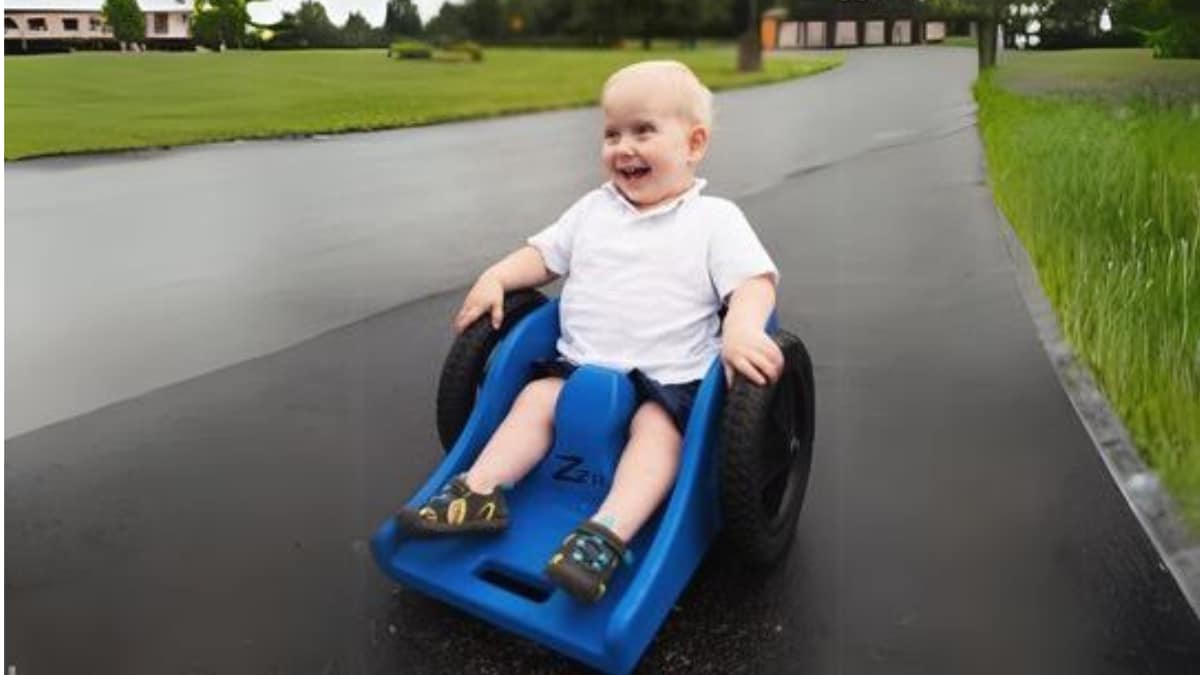What to know
- Understanding health issues and treatments for toddlers with spina bifida can help parents and caregivers make the best possible choices for their child.
- For toddlers with spina bifida, focus on encouraging their independence, supporting their mobility and physical health, protecting their skin, and regularly seeing their healthcare team.

Encouraging independence
Young children experience huge mental, social, and emotional changes. They have a lot of energy and enthusiasm for exploring and learning about their world and becoming independent. Developing independence can be especially challenging for children with spina bifida. Parents should start helping their child develop independence early in childhood.
For toddlers and preschoolers with spina bifida, there are many ways that caregivers can help them become more active and independent:
- Teach the child about his or her body and about spina bifida.
- Encourage the child to make choices.
- Ask the child to help with daily tasks.
Children with spina bifida might need extra help at times. But it is very important that children be given the opportunity to complete a task before help is given. It is also important that parents give only the help that is needed rather than helping with the entire task. Parents should ensure tasks can reasonably be completed and provide enough help to increase their child's independence and confidence.
Finding support
Health effects
No two children with spina bifida are exactly alike. Health issues will be different for each child. Some children have issues that are more severe than other children. With the right care, children born with spina bifida will grow up to reach their full potential.
Mobility
Children affected by spina bifida get around in different ways. These include walking without any aids or assistance; walking with braces, crutches or walkers; and using wheelchairs.
Children with a higher level of spina bifida (near the head) might have paralyzed legs and use wheelchairs. Those with a lower level of spina bifida might have more use of their legs and use crutches, braces, or walkers. They might also be able to walk without these devices.
For more information, please visit the following websites:
CDC's Early Intervention information
Using the bathroom
Children with spina bifida often cannot control when they go to the bathroom (incontinence). They can also develop urinary tract infections.
For more information, please visit these webpages:
Skin
Children with spina bifida can develop sores, calluses, blisters, and burns on their feet, ankles, and hips. However, they might not know when these develop, because they might not be able to feel in certain areas of their body. In addition, toddlers might not know how to tell their parents about issues with their skin.
Guidelines
Physical activity
Regular physical activity is important for all children, but especially for those with conditions that affect movement, such as spina bifida. There are many ways for children with spina bifida to be active. For example, they can:
- Engage in active play with friends.
- Roll or walk in the neighborhood.
- Enjoy parks and recreation areas with accessible playgrounds.
- Participate in community programs for children with disabilities.
- Do exercises recommended by a physical therapist.
A physical therapist can teach children and caregivers how to exercise the child's legs to increase strength and flexibility.
For more information, please visit the following website:
Bathroom plan
It is important to develop a plan for going to the bathroom that works and is as simple as possible. This can lead to increased health, participation, and independence at school and at home, and avoid embarrassment for children with spina bifida.
Healthcare providers can help develop a plan for the child. A tube (catheter) inserted in the child's bladder can help drain urine. In some cases, extra fiber can be added to the diet to keep bowel movements regular. Surgery also might be recommended.
Skin
Parents and caregivers can help protect the child's skin and teach the child how to do this, too, by:
- Checking the child's skin daily for redness, including under braces.
- Avoid hot bath water and seatbelt clasps that may cause burns.
- Always making sure the child wears properly fitting shoes.
- Using sunscreen and ensuring the child doesn’t stay long in the sun.
- Making sure the child isn't sitting/lying in one position for too long.
For more information, please visit the following website:
What you can do
Regular health checks
Every child needs a primary health care provider (for example, a pediatrician, family doctor, or nurse practitioner). In addition, doctors who specialize in different body systems will check and treat a child with spina bifida. These doctors might suggest treatments or surgeries to help the child. These specialists might include:
- An orthopedist, who will work with the child's muscles and bones.
- A urologist, who will check the child's kidneys and bladder.
- A neurosurgeon, who will check the child's brain and spine.
Safety
Safety is an important issue for children with spina bifida. They can be at higher risk for injuries and abuse. Caregivers should teach them how to stay safe and what to do if they feel threatened or in harm's way.
For more information, please visit the following website:
- Sandler, Adrian, M.D.(2004). Living with Spina Bifida: A Guide for Families and Professionals. University of North Carolina Press: Chapel Hill.
- Spina Bifida Association. Guidelines for the Care of People with Spina Bifida. 2018. http://www.spinabifidaassociation.org/guidelines/
